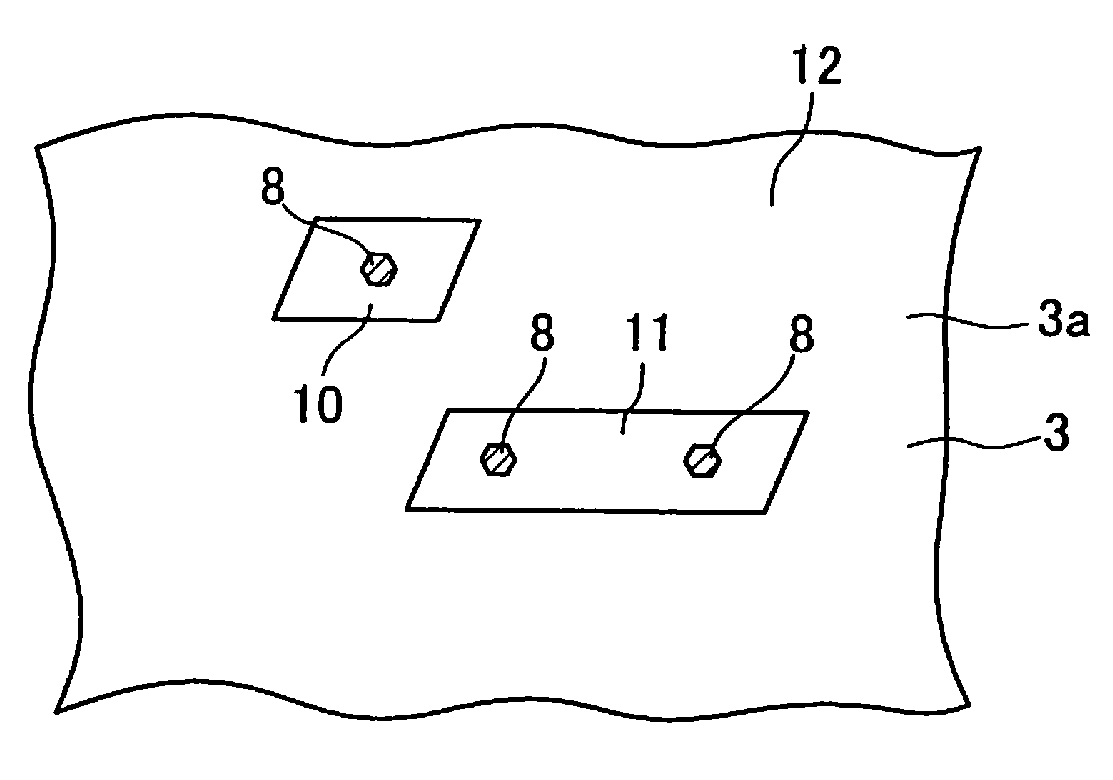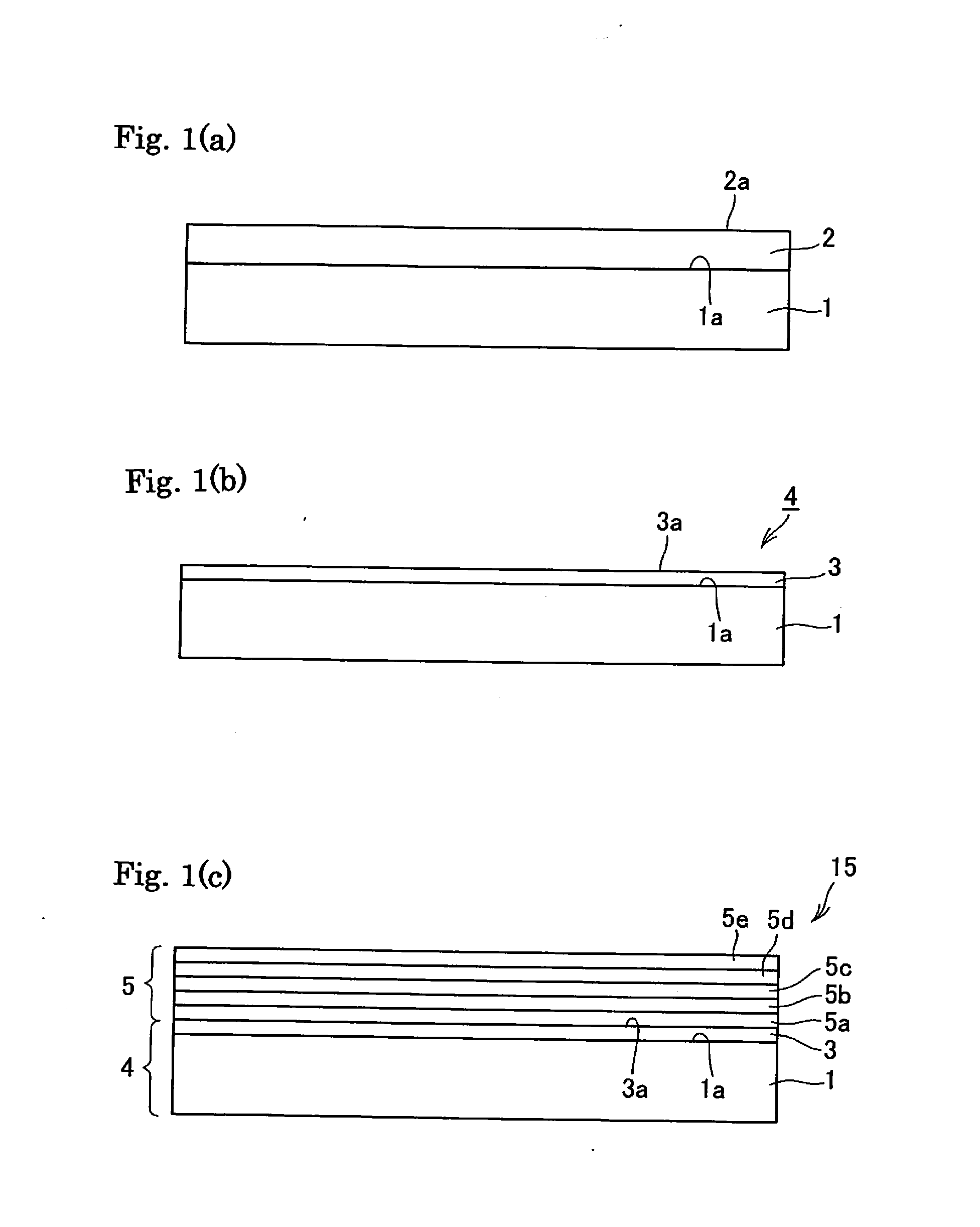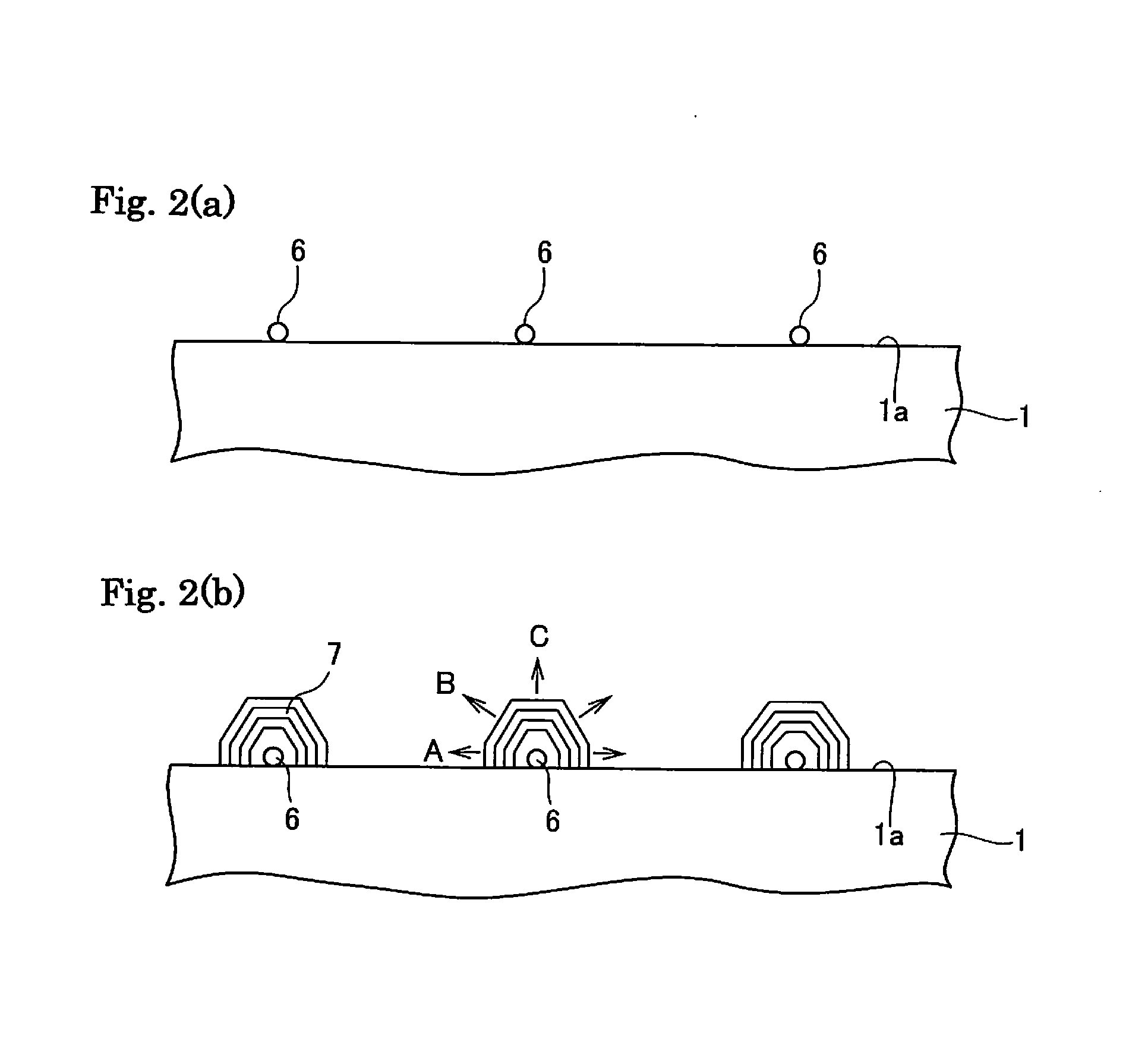Gallium Nitride Substrates and Functional Devices
a technology of gallium nitride and substrate, applied in the direction of polycrystalline material growth, crystal growth process, chemically reactive gas, etc., can solve the problem of the limit of achieve the effect of reducing the actual obtained luminous intensity and superior uniformity of microstructur
- Summary
- Abstract
- Description
- Claims
- Application Information
AI Technical Summary
Benefits of technology
Problems solved by technology
Method used
Image
Examples
example 1
[0087]The GaN substrate was produced according to the following procedure.
[0088]Specifically, it was prepared a self-supporting type seed crystal substrate 1 made of gallium nitride seed crystal whose in-plane distribution of dislocation density by CL (cathode luminescence) was 2×108 / cm2 in average excluding its outer periphery of 1 cm.
[0089]The gallium nitride substrate 1 was used to form a gallium nitride layer 2 by flux method. Specifically, Na and Ga were charged into a crucible, held at 870° C. and 4.0 MPa (nitrogen atmosphere) for 5 hours. Under such temperature and pressure conditions, it was proved that the supersaturation degree was low and the growth rate was very low as 0.5 μm / hr. Although it was grown about 2.5 μm after holding for 5 hours, the nuclei were rarely observed as described above and there were regions in part where the growth was hardly observed. Then, it was cooled to 850° C. for 10 minutes. Then, it was held at 4.0 MPa for 20 hours to grow the gallium nitri...
example 2
[0100]The experiment was carried out as the example 1, except that the frequency of the inversion of the rotational direction for agitating solution was made 400 seconds. It was thus obtained a colorless and transparent crystal 4 having a growth thickness of 200 μm. The average growth rate was about 10 μm / hr. An inclusion-containing layer was observed in a region of about 15 μm in the initial stage of growth. On the other hand, inclusions were not observed on the surface of the grown crystal. For the reference, FIG. 5 shows a fluorescence microscopic image of a gallium nitride layer by liquid phase process at a thickness of 200 μm.
[0101]The surface of the thus obtained gallium nitride layer of liquid phase process was subjected to CMP polishing until the thickness became 50 μm, and thereafter, the in-plane distribution of the dislocation density was measured by CL to prove to be 4 to 5×106 / cm2. FIG. 6 shows an example of the CL image. It was observed a plurality of bright regions em...
example 3
[0104]The experiment was carried out as the example 1, except that the frequency of the inversion of the rotational direction for agitating solution was made 300 seconds. It was thus obtained a colorless and transparent crystal 2 having a growth thickness of 160 μm. The average growth rate was about 8 μm / hr. An inclusion-containing layer was observed in a region of about 15 μm in the initial stage of growth. On the other hand, inclusions were not observed on the surface of the grown crystal.
[0105]The surface of the thus obtained gallium nitride layer 2 of liquid phase process was subjected to CMP polishing until the thickness became 50 μm, and thereafter the in-plane distribution of the dislocation density was measured by CL to prove to be 4 to 5×106 / cm2. FIG. 7 shows an example of the CL image. It was observed a plurality of bright regions emitting light in the observed visual field. The outline of the region had a shape substantially of a hexagonal or a parallelogram, as can be se...
PUM
| Property | Measurement | Unit |
|---|---|---|
| width | aaaaa | aaaaa |
| length×0 | aaaaa | aaaaa |
| width | aaaaa | aaaaa |
Abstract
Description
Claims
Application Information
 Login to View More
Login to View More - R&D
- Intellectual Property
- Life Sciences
- Materials
- Tech Scout
- Unparalleled Data Quality
- Higher Quality Content
- 60% Fewer Hallucinations
Browse by: Latest US Patents, China's latest patents, Technical Efficacy Thesaurus, Application Domain, Technology Topic, Popular Technical Reports.
© 2025 PatSnap. All rights reserved.Legal|Privacy policy|Modern Slavery Act Transparency Statement|Sitemap|About US| Contact US: help@patsnap.com



